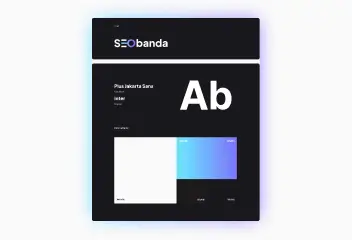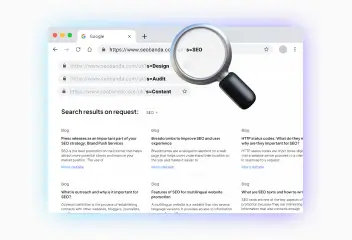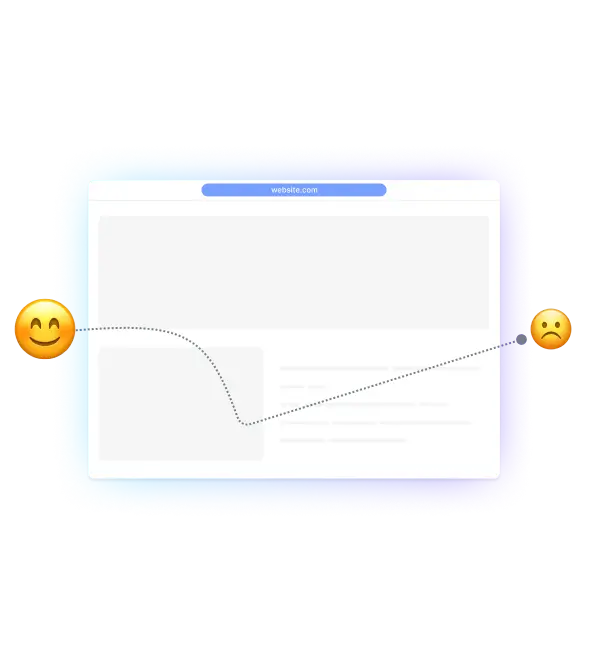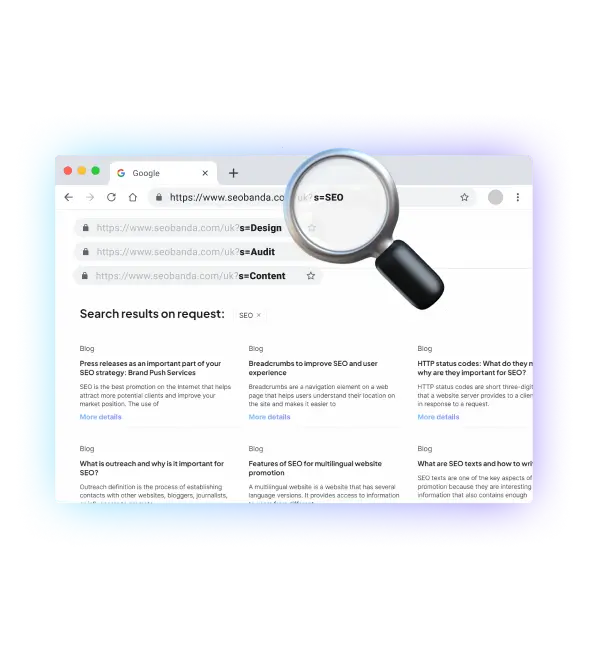



Defining bounce rate

Bounce rate is defined as the percentage of sessions on your website where a user views only one page and leaves the site without taking any further action. How to calculate bounce rate? It is calculated using a simple formula: the percentage of sessions with one page viewed out of the total number of page visits:
Bounce rate = (Number of sessions with one page / Total number of sessions) * 100%.
For example, if there were 1000 sessions on your website, of which 400 ended after viewing one page, the bounce rate is 40%.


Why is bounce rate important?
- User satisfaction: A high website bounce rate may indicate that users are not finding what they are looking for on your site or are experiencing problems that force them to leave. This is an important signal that you need to improve the quality of the site.
- Relevance of information: Bounce rate analysis allows you to determine whether the information on your website is relevant and useful. If users leave the site quickly, you may need to update or revise the content.
- Identification of weaknesses: A high bounce rate can indicate weaknesses in the site structure or content that prevent users from completing targeted actions, such as purchases, registration, or form filling.
- Improve conversion rates: A decrease in bounce rate can lead to an increase in conversions as users stay on the site longer and engage more with the content and functionality.
- SEO: Bounce rate can affect your site’s search engine rankings. Search engines such as Google can take bounce rate into account as a signal of website quality. A high bounce rate can negatively affect your site’s ranking in search results.

Increase visibility
for your business: SEO solution for growth!


What can a high failure rate indicate?
A high bounce rate on a website can indicate various issues that affect the conversion and performance of the site. Let’s take a look at the main reasons for a high bounce rate and what they may indicate.
Content mismatch with user expectations
- Irrelevant content: If the content on a page doesn’t match what users expect to see, they may quickly abandon the site. This can be the result of improper keyword optimization. In order to make the content on the pages relevant, you need to collect the semantic core of competitors and analyze the needs of users.
- Headings and meta tags: Titles and meta descriptions should clearly reflect the content of the page. If they mislead users, it can lead to a high bounce rate.
Poor user experience (UX)
- Page loading speed: Slow loading pages can be off-putting to users. They may not wait until the page is fully loaded and leave the site.
- Responsive design: If the site is not optimized for mobile devices (e.g., text is too small for phones), users may have difficulty viewing content, which can also lead to bounce rates.
- Poor navigation: Complicated or unclear navigation can make it difficult to find the information you need, leading to quick exits from the site. If a person visits a website and can’t find what they want within 5 seconds, they are likely to leave the site.
Technical problems
- Errors on the pages: Technical errors such as 404 errors or broken links can lead to a high bounce rate.
- Website security: The lack of a secure connection (HTTPS) can cause users to distrust, especially on sites where they enter personal data.
Poor quality of content
- Unattractive or outdated content: Content that is not interesting or useful to users can lead to high bounce rates. This can be due to poor quality of texts, lack of visuals, or insufficient information.


How to reduce the high bounce rate

- Analyze traffic and user behavior: Use analytics tools such as Google Analytics 4 to understand where users are coming from and how they interact with the site. This will help you identify problematic pages and reasons for high bounce rates.
- Improve page loading speed: Optimize images, reduce the use of scripts and styles, and use caching and content delivery networks (CDNs) to speed up page loading.
- Optimize for mobile devices: Make sure your site displays and functions correctly on all types of devices. Use responsive design and test your site on different mobile platforms.
- Improve content quality: Create valuable, relevant, and engaging content that meets the needs of your audience. Use visual elements such as images, videos, and infographics to make your content more engaging.
- Customize targeting and advertising: Make sure that your advertising campaigns are targeted to the right audience. Use the right keywords and customize your ads to match the content of the pages they lead to.
- Improve website navigation: Use breadcrumbs, search terms to find information, and create intuitive navigation so that users can find the information they need quickly and easily.

Increase visibility
for your business: SEO solution for growth!


Normal bounce rate values for different types of sites
There are many types of websites and each of them has its own normal bounce rate:
- Blogs and news sites: A high bounce rate (70-90%) can be normal because users often visit the site to read one specific article.
- Informational sites: Sites with informational content such as reference books or encyclopedias can also have high bounce rates (60-80%).
- Online stores: Usually, a low bounce rate (20-40%) is desirable for online stores, as it indicates that users are browsing several products or pages before making a purchase. This has a direct impact on conversion, so a high bounce rate indicates that you need to improve the quality of your site.
- Landing pages: Pages with specific marketing goals can have a high bounce rate if the goal is achieved directly on that page (e.g., filling out a form).


Conclusion
Bounce rate meaning is the percentage of users who left the site after viewing one page without taking any action. It can be important for analyzing the quality of a website, finding weaknesses, improving content, and increasing conversions. There are normal bounce rates for each type of website depending on its goals.
If you want to reduce the bounce rate on your website, contact SEObanda and we will help you create high-quality content, optimize your website, and adapt it to different gadgets.
You may also like it

Brand identity: The key to brand recognition and SEO success
Every product has its own unique feature that sets it apart from other brands. It could be a special font, a unique mascot, or an interesting logo with the right...

What is a dynamic URL and its impact on SEO
A dynamic URL (Uniform Resource Locator) is a web address that changes depending on the user's request or specific parameters. It differs from a static














